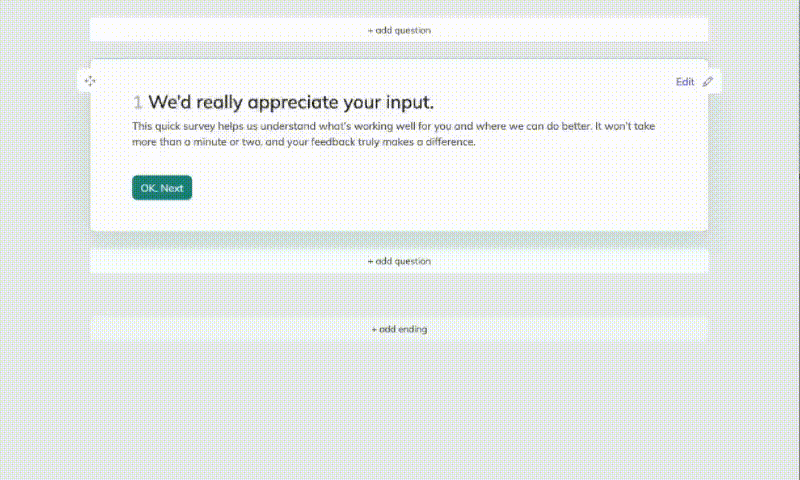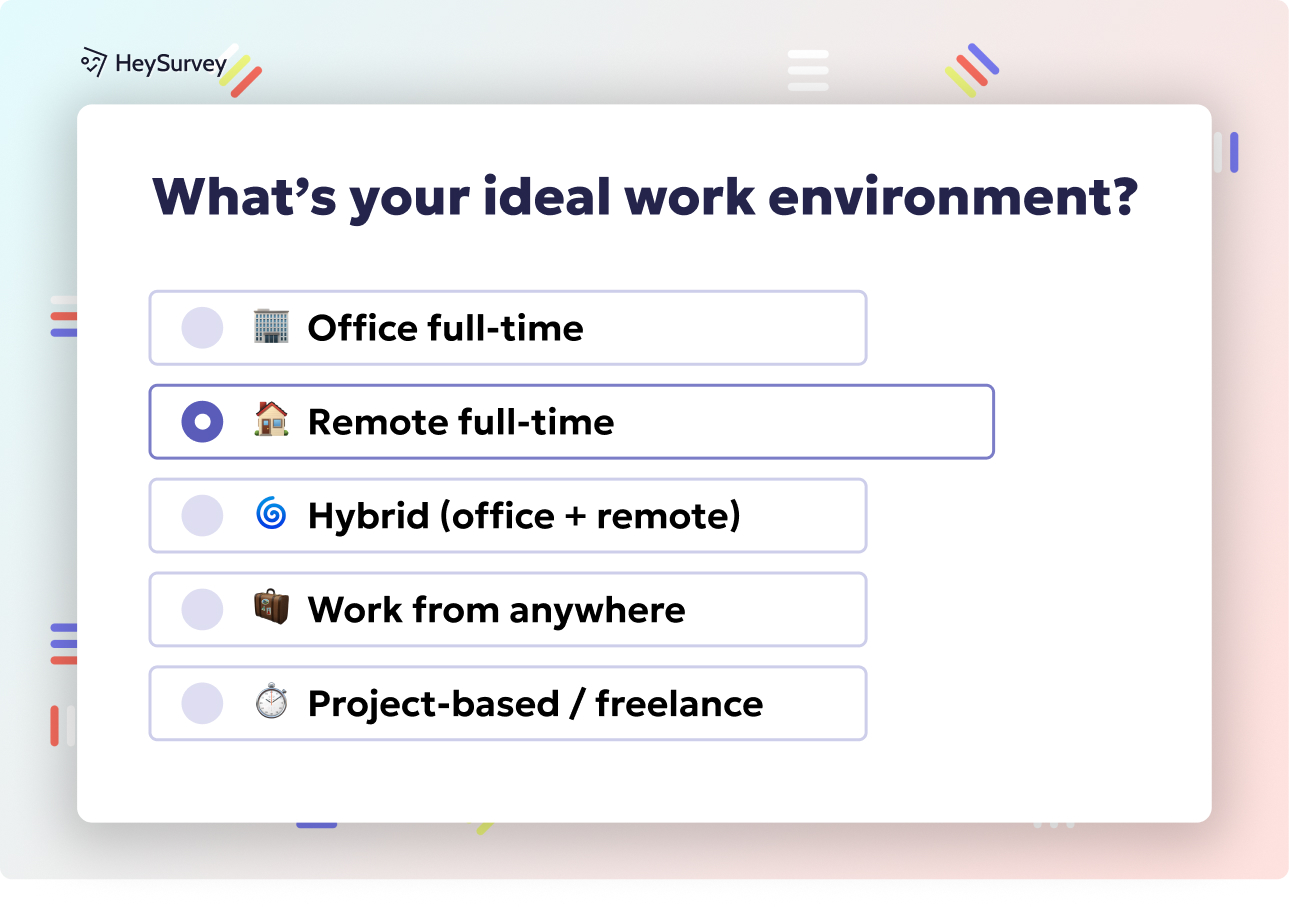31 Interior Design Survey Questions: Types, Use & Examples
Discover 28 expert interior design survey questions covering preferences, style, budget, and more to streamline client communication and boost satisfaction.
When you ask designers—and their clients—what slows projects most, it’s almost always miscommunication. That’s where interior design survey questions come in. A well-timed interior design questionnaire builds trust, narrows choices, and makes everyone happier with fewer surprises. In fact, asking the right questions speeds up every phase, wins glowing referrals, and helps you make clear, data-driven design decisions. In the next sections, we’ll break down survey types, highlight exactly when to use them, and give you plenty of ready-to-copy client design survey questions.
Client Preference Survey
Why & When to Use
The client preference survey is your secret weapon at kickoff. It should be used long before drawings, mood boards, or paint swatches come into play. At your very first chat—or the discovery call—you can use the client interior design questionnaire to dive into all those needs, wants, and pet peeves.
By collecting honest, early answers, you’ll keep your project from veering off course later. Aligning expectations from day one means you’ll avoid awkward “I thought you’d…” moments halfway through. Get these details up front and you’ll reduce revisions, save time, and set the tone for a smooth process.
When your clients feel heard, they’re more likely to stay engaged and excited. You lock in buy-in and uncover the “why” behind their wishes. This helps not just with the first project, but future rooms too. And, if you record their homeowner design preferences, you can create reference points for all design phases.
Sample Questions
Which rooms are the highest priority for you and why?
Describe your day-to-day activities in this space.
List three colors you love and three you dislike.
How important is having child- or pet-friendly materials?
Rank these design styles from most to least appealing: modern, farmhouse, Scandinavian, industrial, traditional.
Are there any must-have or must-avoid features in your vision?
What have you seen in friends’ or magazines’ homes that you adored (or couldn’t stand)?
Get your client’s full wishlist on paper, and your path to design glory gets a whole lot smoother.
Implementing client preference surveys in interior design projects enhances client satisfaction by aligning designs with client visions and improving communication. (stylerow.com)
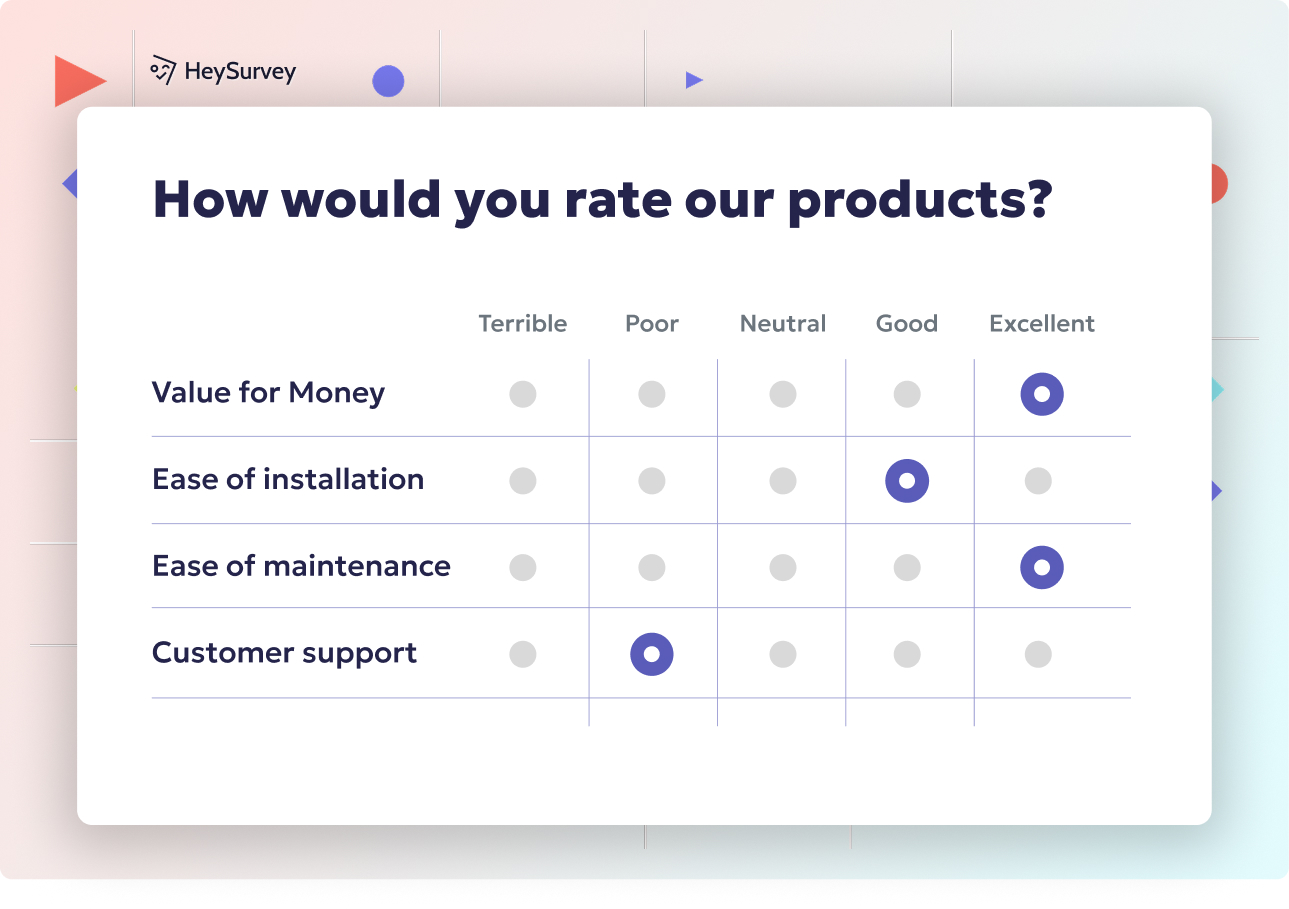
Creating an interior design survey with HeySurvey is refreshingly simple—even if you’ve never used survey software before. Just follow these three easy steps, and you’ll have a professional, polished survey ready to go in no time.
Step 1: Create a New Survey
- Head to the HeySurvey homepage and click “Create Survey”.
- Choose the option to start with a pre-built template for interior design surveys, or pick a blank survey if you want full control.
- Name your survey—something like “Client Design Preferences”—so it’s easy to find later in your dashboard.
Step 2: Add Questions
- Use the Add Question button to insert your carefully crafted interior design survey questions.
- Select from types like Choice (for ranking styles or multiple-choice), Scale (for rating importance), or Text (for open responses and descriptions).
- Customize each question’s text, reorder questions by dragging, and toggle required answers to keep your responses consistent and complete.
Step 3: Publish Your Survey
- Click Preview to check how your survey looks on desktop and mobile devices.
- When you’re happy, hit Publish to generate a live survey link.
- Share the link with your clients via email, social media, or embed it on your website for easy access.
Bonus Steps to Make Your Survey Shine
Apply Branding: Upload your logo and tweak colors, fonts, and backgrounds using the Designer Sidebar to match your design firm’s style. This makes your survey unmistakably yours and boosts professionalism.
Define Settings: In the Settings panel, set start and end dates, limit the number of responses, or add a redirect URL to thank respondents or guide them elsewhere upon completion.
Skip or Branch Questions: Use branching logic to customize the survey path based on client answers—for example, skip certain questions if a client isn’t interested in sustainable materials. This keeps the experience smooth and relevant for every respondent.
Ready to create your own interior design survey? Click the button below to start with a pre-designed template and free yourself to focus on what really matters: designing dream spaces with happy clients.
Space Utilization & Functionality Survey
Why & When to Use
Function trumps everything if a room doesn’t work for the people living in it. That’s where this survey comes in—before you sketch out furniture layouts, prepare to measure traffic flow, or suggest storage solutions. A space utilization and functionality survey gives you real numbers so your design choices look smart—not just pretty.
Run this survey once your clients are seriously considering reworking their home’s use of space. Maybe they’re frustrated with clutter or bumping elbows during dinner. Your questions will uncover who uses what, when, and for which activities. With these insights, every decision you present will be backed by evidence, not just a designer’s instinct.
The benefit? Justifying your design rationale in presentations becomes a breeze. Data crushes doubts and brings clients along for the ride, cutting down on objections and second-guessing in later stages. Plus, clients love feeling like part of a “collaborative process”—which is exactly what a thoughtful space planning questionnaire delivers.
Sample Questions
How many people use this room simultaneously on a typical day?
Which activities need dedicated zones (e.g., reading, gaming, remote work)?
Rate your current storage on a scale of 1–10; what’s missing?
Do you host gatherings? If yes, how many guests on average?
Are there mobility or accessibility considerations we should accommodate?
What’s your biggest frustration with the current layout?
Which items or furniture must remain in the new design?
Unpack current habits and pain points first, and your designs will truly serve the real lives of your clients.
A 2021 study found that in low-income public housing, approximately one-third of space volume is underutilized as dead space, highlighting opportunities for improved storage solutions. (journal.iccaua.com)
Style & Aesthetic Alignment Survey
Why & When to Use
Once you’ve dazzled your clients with mood boards, it’s tempting to believe you’re done. But don’t spike the football yet! To avoid setbacks, use a style and aesthetic alignment survey right after your presentation. This turns gut reactions into words you can actually use.
Clients often see images differently; what looks “cozy” to one is “cluttered” to another. By asking questions about the visual direction, you eliminate ambiguity. Fine-tuning the emotional vibe of a space makes every design choice more intentional and produces rooms that feel made-to-order (because they are).
A survey at this stage can dramatically cut down on revision rounds. Instead of guessing what your client means by “light and airy,” you get explicit descriptions and preferences. Plus, asking about combinations—like vintage plus new, or metal finishes—will build trust as clients see you’re after their style, not just yours.
Sample Questions
Which three adjectives best describe your desired ambience?
Choose your preferred metal finish: brass, chrome, matte black, brushed nickel.
Which pattern scale (small, medium, large) most appeals to you for textiles?
How do you feel about mixing vintage pieces with new furniture?
What artwork styles inspire you (abstract, landscape, portrait, mixed media)?
Are there any materials, finishes, or textures you absolutely want (or do not want) to see?
Would you prefer a harmonious color palette or bold contrast?
Pin down their vision now, and you’ll save yourself time, money, and a few headaches down the line.
Budget & Timeline Expectations Survey
Why & When to Use
Say it loud: “Money talk isn’t awkward, it’s necessary!” The budget and timeline expectations survey is crucial immediately after your initial conversation on project scope. This is where transparency kicks off, so no one’s caught off guard at invoice time.
Laying out financial boundaries up front may not sound glamorous, but it’s a designer’s best friend. Preventing sticker shock reduces delays, keeps the scope realistic, and stops change orders from multiplying. Your client feels empowered to talk about where they want to go “all out” versus where they’d rather dial things back.
A separate bonus? You’ll also get a sense for how flexible (or not) your clients are about schedules. Will they camp out in the guest room for six months? Or is this project only happening if it finishes before the in-laws visit? This data will help you schedule trades, adjust phasing, and avoid that all-too-common project bottleneck.
Sample Questions
What is your ideal overall investment range for this project?
Which elements would you splurge on versus save?
Do you prefer phased implementation or single-install completion?
What is your target completion date, and how flexible is it?
How comfortable are you with unforeseen contingency costs (e.g., 10% buffer)?
Are there any parts of the process you want to handle yourself?
Would you prefer transparent invoicing, or a fixed-fee approach?
Get real about dollars and deadlines upfront, and you’ll win trust and repeat business.
Conducting budget and timeline surveys early in interior design projects enhances financial planning, prevents cost overruns, and ensures client satisfaction. (satyamaker.com)
Sustainability & Material Preferences Survey
Why & When to Use
Eco-friendly design isn’t a fad. For many, it’s a deal-breaker—or a delightful bonus. Whenever you sense sustainability will be a factor, whip out your sustainability and material preferences survey. Whether for new builds, major renovations, or just when eco-savvy choices matter, you’ll show that green options are part of your standard playbook.
Guiding your sourcing with this info can help you select certified products, reclaimed materials, and allergy-friendly finishes with confidence. Aligning on eco goals means you’ll skip later arguments and source smarter from day one. It also helps you stay on top of evolving trends, as more homeowners look for LEED credits, FSC stamps, and GREENGUARD certifications.
Material choices play a big role in health and comfort, so don’t forget to ask about fabric allergies, sensitivity to off-gassing, or interest in smart-home energy solutions. Your design questionnaire quickly becomes a bragging point (“Our designer only uses low-VOC paint!”).
Sample Questions
How important is sustainably sourced wood on a scale of 1–10?
Would you pay a premium for low-VOC paints and finishes?
Are reclaimed or upcycled materials acceptable in your project?
What energy-efficiency features interest you most (LED lighting, smart thermostats, solar shades)?
Do you have allergies that influence fabric or carpet selection?
Is a third-party sustainability certification (e.g., FSC, GREENGUARD) required or preferred?
Would you like suggestions for local, handmade, or artisan products?
Get this info into your product search, and clients will remember your dedication to the earth and their wellbeing.
Post-Project Satisfaction Survey
Why & When to Use
Your project’s not really over until you know your client is happy. Post-project satisfaction surveys go out about one to three months after the reveal, hitting just as the client’s enjoying their “new normal.” These surveys aren’t just about making you feel good—though the testimonials don’t hurt!
By identifying what wowed your clients (and what could shine brighter), you unlock a feedback goldmine. Collecting service insights helps your design process keep evolving, delights future clients, and is the easiest way to gather glowing quotes for your website or social feeds.
Don’t underestimate the power of a referral, either. If they’re excited enough to recommend you—or at least let you photograph their space—you’ve scored free marketing. This is also your chance to make last tweaks if anything isn’t perfect, cementing client loyalty for good.
Sample Questions
How satisfied are you with the final design outcome? (1–10)
Which aspect of the process exceeded your expectations?
What could we improve for future clients?
Have friends or family commented on the new space? What did they say?
May we photograph and feature your project in our portfolio?
Would you recommend our services to others? Why or why not?
Were there any surprises during the process, good or bad?
Nurture these relationships, and you’ll never have to scramble for new projects again.
Best Practices: Dos and Don’ts for Interior Design Surveys
Creating surveys is half art, half science. Master the interior design survey best practices and your questions become irresistible—because who doesn’t want to answer smart, respectful, and fun questions? Keep these simple but powerful “dos and don’ts” in mind for every client touchpoint.
Do:
- Keep your questions concise—brevity is a kindness.
- Mix quantitative (scales, ranks) and qualitative (open text) questions.
- Use visual scales or image selections when asking for style feedback.
- Always add an “other” option so clients can surprise you.
- Test your survey on mobile for the on-the-go client.
Don’t:
- Never lead the respondent with biased questions.
- Avoid jargon; plain language keeps all clients comfortable.
- Never ignore data privacy—only gather necessary info, and secure it well.
- Don’t skip follow-up: always act on what you learn.
- Never make surveys longer than 10 minutes, or they’ll end up abandoned.
For maximum responses, send surveys during mid-morning workdays or early evenings—they’ll be seen and answered. In presentations, showcase insights you’ve gained (“90% of our clients love built-in storage!”) to build authority and trust. Leverage survey results by returning to them during design reviews, vendor meetings, and case studies.
Perfecting your design questionnaire tips means you’ll attract ideal clients, create seamless workflows, and watch both your reviews and referrals skyrocket.
Conclusion
Great interior design starts—and ends—with better questions. Every survey lets you peek inside your clients’ wishes, habits, and happiness. Armed with these ready-to-use interior design survey questions, you’ll deliver projects faster, with more joy and fewer re-dos. Clear communication is your new superpower. Happy surveying, and even happier designing!
Related Customer Survey Surveys
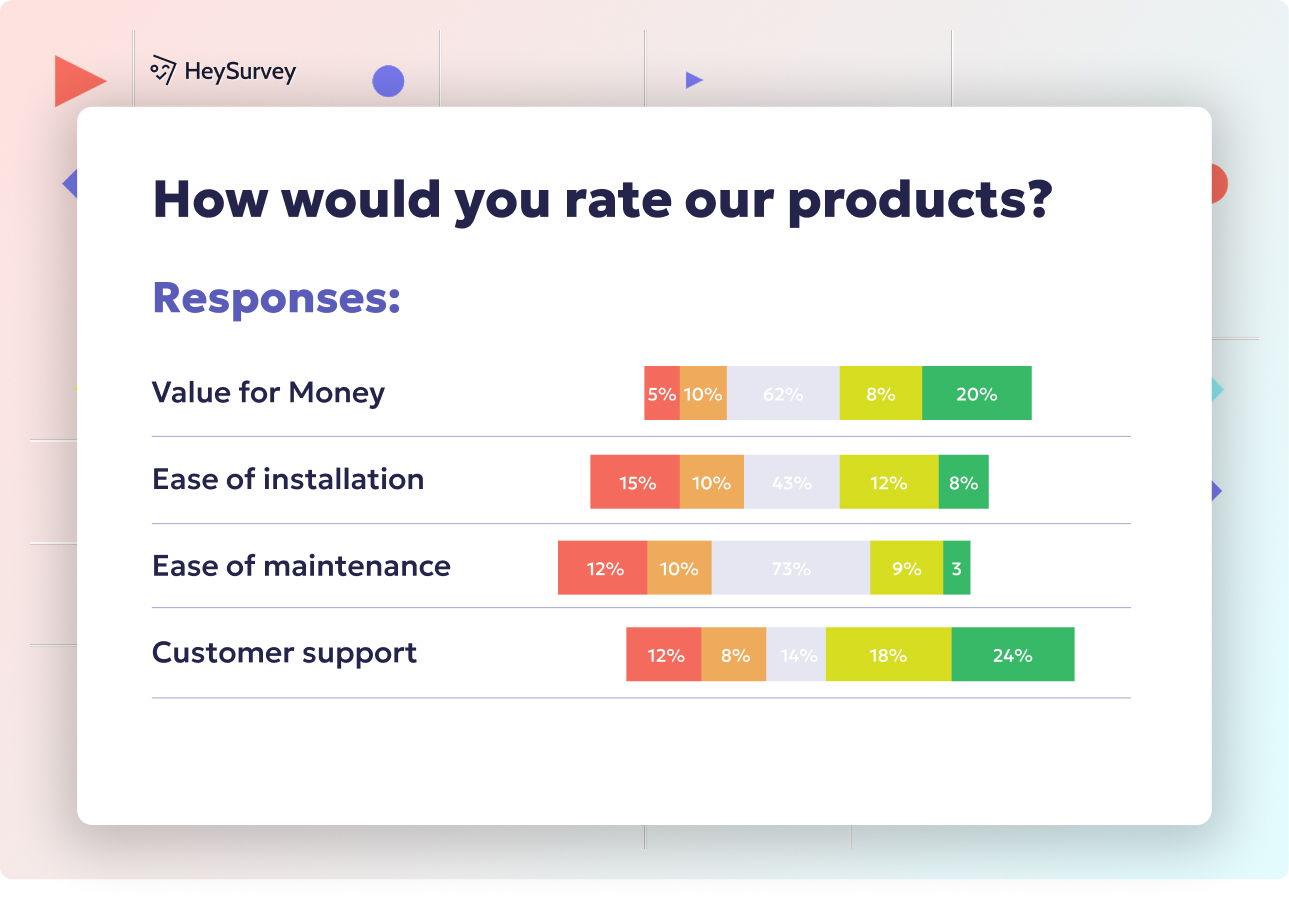
28 Restaurant Survey Questions to Improve Customer Feedback
Discover 25 sample restaurant survey questions to boost customer satisfaction and improve your di...
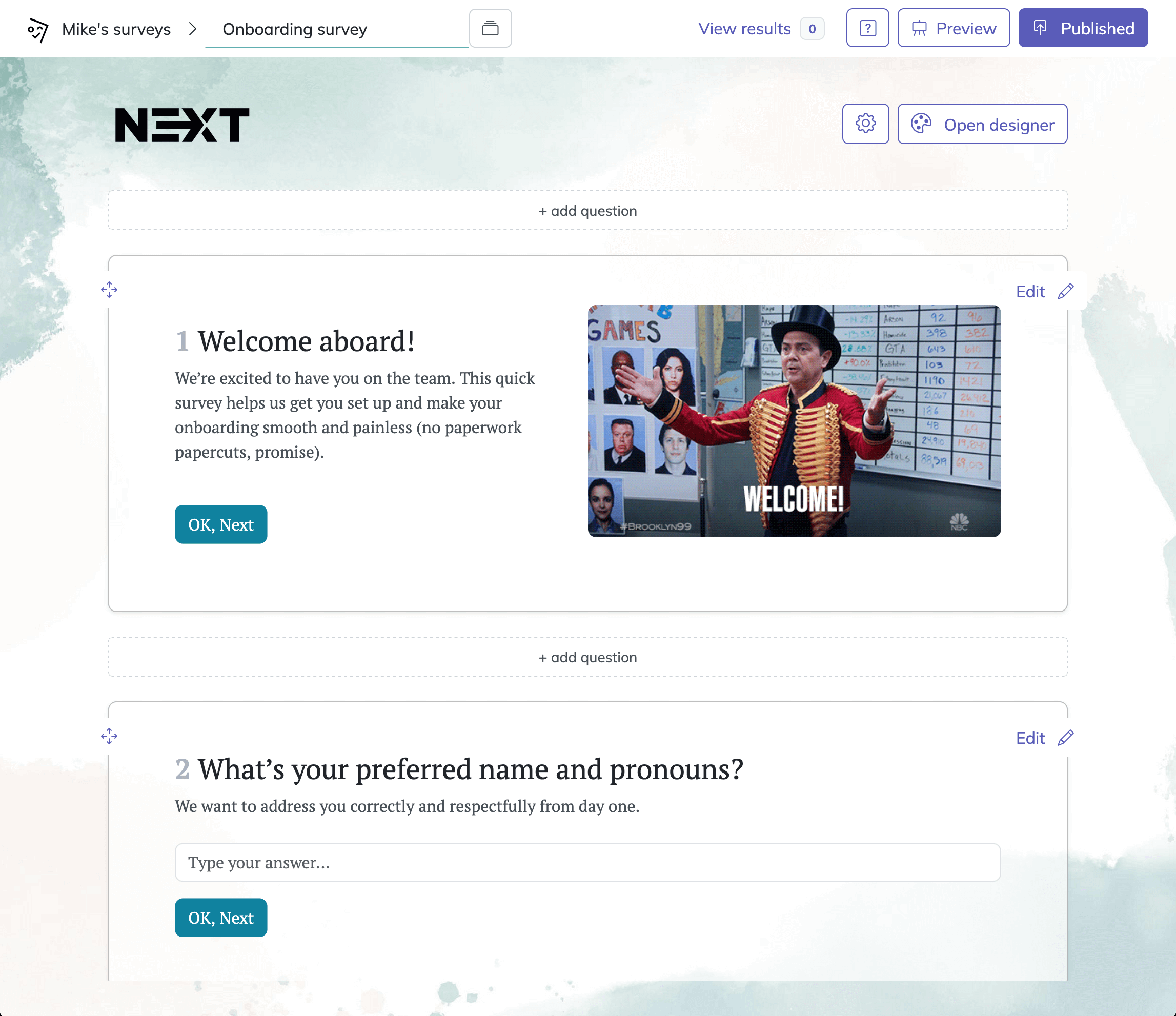
31 Essential Help Desk Survey Questions to Boost Support Success
Discover 30+ effective help desk survey questions with detailed examples to boost IT support feed...
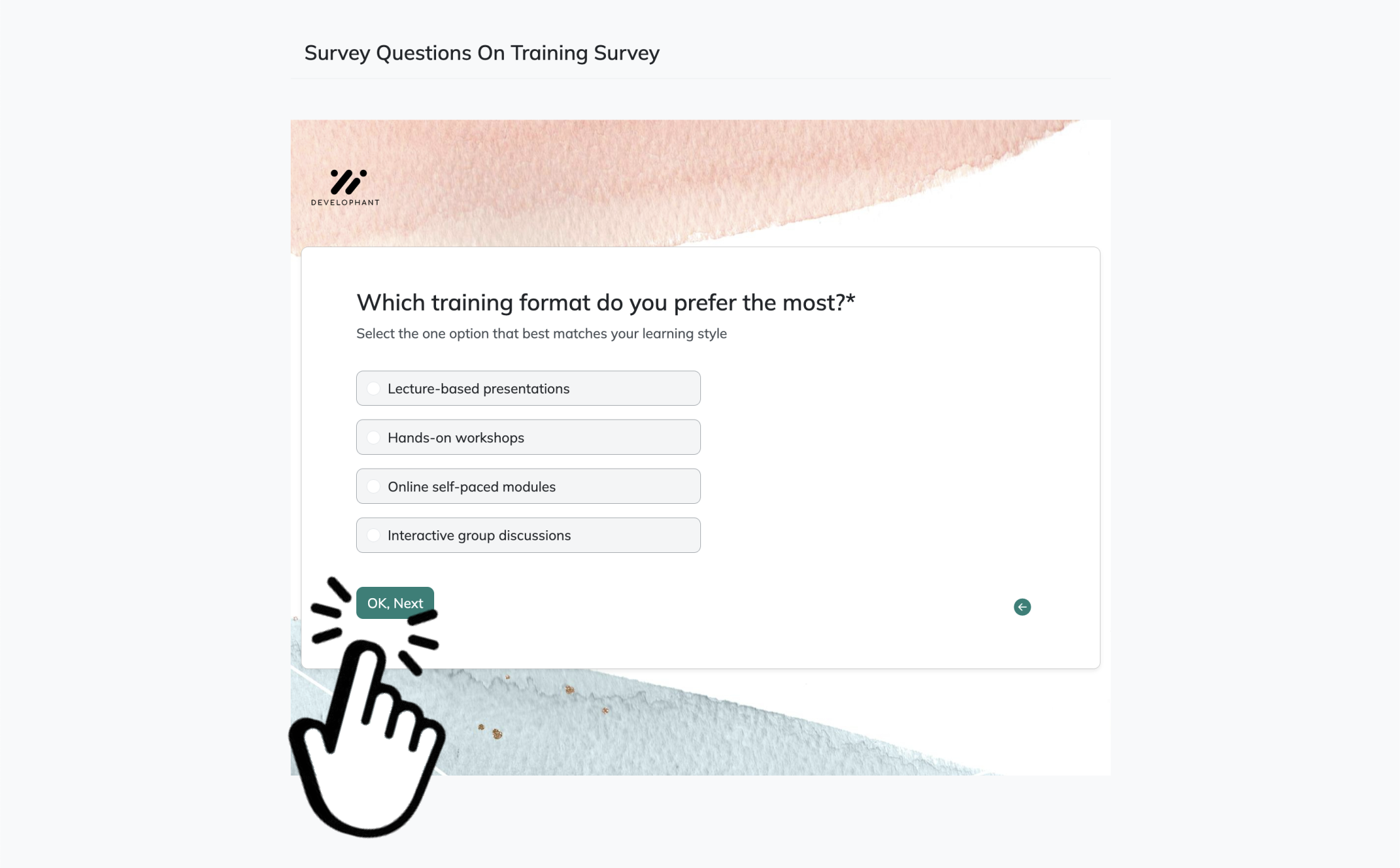
28 Shipping Survey Questions to Improve Customer Satisfaction
Discover 25 expert shipping survey questions to assess satisfaction, boost logistics efficiency, ...
